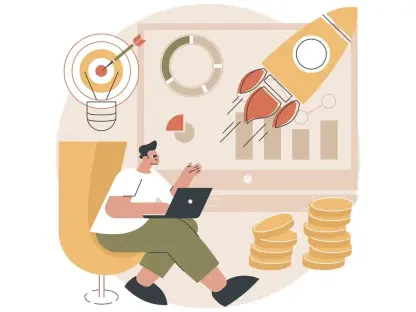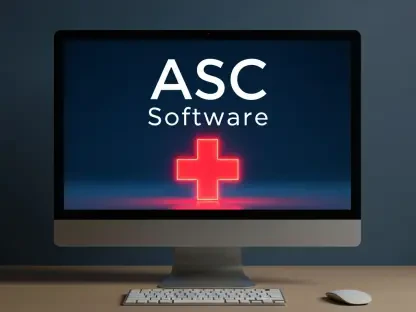What happens when a trusted digital companion, relied upon by millions for capturing everything from receipts to lecture notes, suddenly disappears? For users of Microsoft Lens, this isn’t a distant worry—it’s happening now in 2025. The abrupt retirement of this popular scanning app in favor of Microsoft 365 Copilot, an AI-driven alternative, has left a global community of users reeling. This seismic shift raises a critical question: can cutting-edge technology truly replace the simplicity and precision of a specialized tool?
The End of an Era for a Digital Staple
Microsoft Lens, first introduced a decade ago, became a go-to solution for digitizing physical documents with ease. Its straightforward interface allowed anyone—students, small business owners, or corporate professionals—to scan and save notes, business cards, and more into formats like PDFs or Word files. What set it apart was its no-cost model and seamless integration with Microsoft’s ecosystem, a breath of fresh air in an app world often cluttered with paywalls.
The app’s shutdown, finalized in 2025 with support ceasing on September 15, removal from app stores on November 15, and new scans disabled by December 15, marks a significant pivot for Microsoft. Users can still access old scans if the app remains installed, but the door to its core functionality has slammed shut. This move has sparked a wave of uncertainty, as many wonder how to fill the void left by such a reliable tool.
Why This Change Matters
The numbers paint a stark picture of Lens’ impact: over 92.3 million downloads since tracking began, with 322,000 in just the last 30 days, according to Appfigures data. These figures highlight a vast user base now forced to adapt or abandon a tool embedded in their daily routines. From teachers digitizing handouts to entrepreneurs archiving receipts, Lens was more than an app—it was a workflow cornerstone.
Beyond raw statistics, the transition to Copilot signifies a broader trend in tech: the push toward AI-powered, all-in-one platforms. While innovation drives progress, the risk of alienating users who prized Lens for its focused purpose looms large. This isn’t just about losing an app; it’s about the potential erosion of trust in a company’s commitment to user needs over flashy advancements.
Unpacking the Switch to Copilot
Microsoft’s replacement, Microsoft 365 Copilot, brings AI capabilities like chat assistance and automation to the table, but it stumbles in replicating Lens’ core strengths. Direct saving to OneNote, Word, or PowerPoint—a hallmark of Lens—is absent. Business card integration into OneNote, a niche but valued feature, is also missing, as are accessibility tools like read-out-loud and Immersive Reader, which supported users with disabilities.
This gap in functionality has left many scratching their heads. A small business owner from Seattle shared, “I used Lens every day to scan invoices straight into my files. Copilot feels like a step backward for something so basic.” Such sentiments echo a disconnect between Microsoft’s vision of an AI future and the practical demands of its audience.
The phased shutdown of Lens throughout 2025 has further amplified concerns. While Microsoft touts Copilot as a forward-thinking solution, the lack of parity in features suggests a trade-off that not all users are willing to accept. This shift mirrors a pattern among tech giants, where specialized tools are often sacrificed for broader, less tailored platforms.
Hearing the Users’ Frustration
Across social media and forums, the outcry from Lens users has been loud and clear. A college student from Texas lamented, “I relied on Lens to capture whiteboard notes during lectures. Copilot doesn’t even come close for quick scans.” Such personal accounts underscore the app’s role in everyday life, especially for those without access to premium alternatives.
Industry experts have also weighed in, pointing to a recurring theme in tech evolution. “Companies like Microsoft are all-in on AI, but they risk losing loyal users when replacements don’t match up,” noted a tech analyst based in San Francisco. The data backs this concern—Lens’ consistent download numbers suggest a demand that Copilot may struggle to meet without significant updates.
The frustration isn’t just about functionality; it’s about accessibility. Users with visual impairments, who depended on Lens’ read-out-loud feature, now face a void that Copilot doesn’t fill. This oversight highlights a critical flaw in prioritizing innovation over inclusivity, leaving segments of the user base feeling sidelined.
Adapting to a New Reality
For those impacted by Lens’ discontinuation, the path forward requires quick action and exploration. Backing up existing scans to a secure cloud service or local storage is a crucial first step to preserve valuable data before the app becomes fully obsolete. This ensures no critical documents are lost in the transition.
Experimenting with Copilot offers another avenue, though users should brace for a learning curve. Manual file transfers might partially bridge the gap left by missing integrations, but they lack the efficiency Lens provided. For a more direct substitute, third-party apps like Adobe Scan or CamScanner present viable options with similar scanning and saving capabilities.
Beyond adaptation, voicing concerns directly to Microsoft through official support channels remains a powerful tool. User feedback has historically influenced software updates, and collective input could prompt enhancements to Copilot or even a reconsideration of Lens’ fate. Staying proactive is key in navigating this unexpected change.
Reflecting on a Tech Transition
Looking back, Microsoft’s decision to replace Lens with Copilot in 2025 stirred a mix of disappointment and curiosity among its vast user base. The move illuminated the tension between embracing AI-driven innovation and preserving the utility of purpose-built tools that millions depended on. While the intent to streamline offerings was evident, the execution left notable gaps.
For users, the journey ahead involved adapting to new tools or seeking alternatives that matched Lens’ simplicity. Engaging with Microsoft to advocate for missing features became a vital step for many. As technology continued to evolve, this chapter served as a reminder that user needs must anchor every leap forward, ensuring no one was left behind in the rush toward progress.









